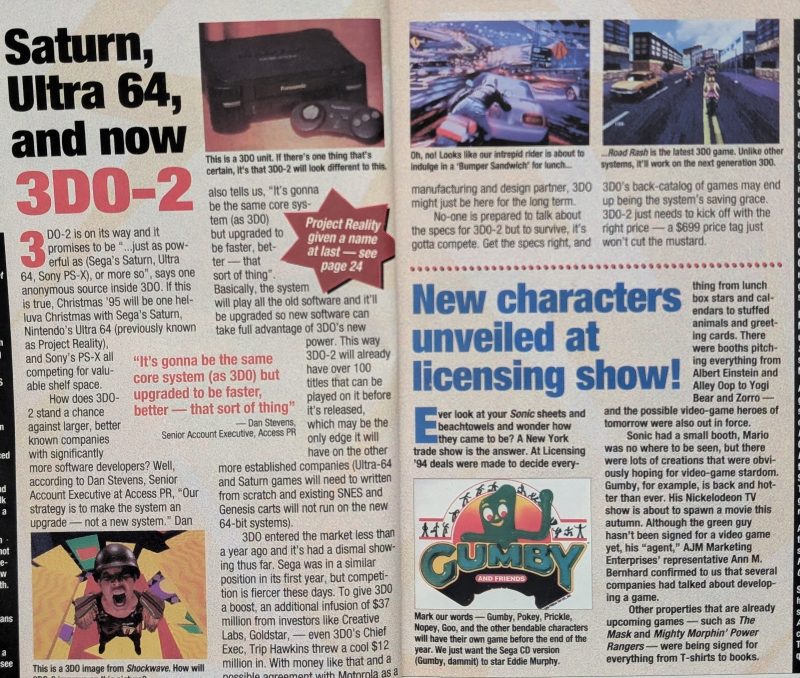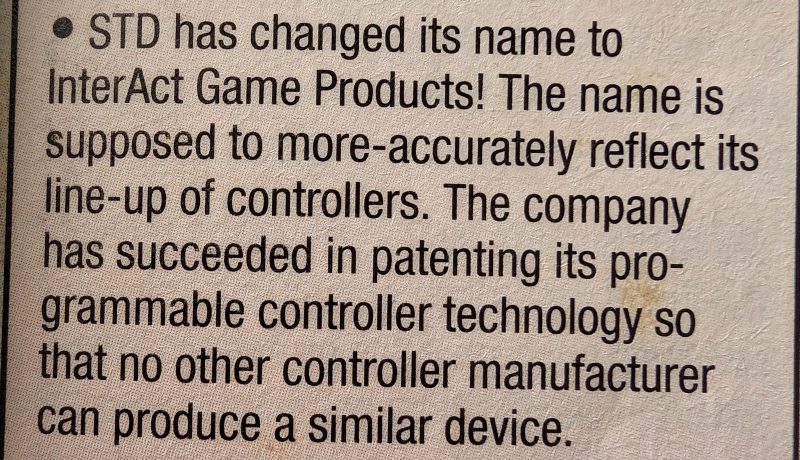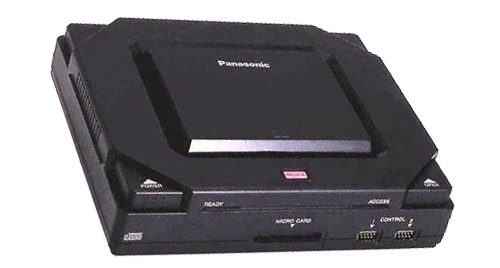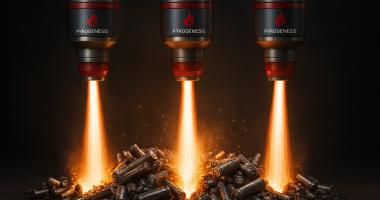- Sony’s (NYSE:SONY) controversial unveiling of the PlayStation 5 Pro upgrade console has drawn a lot of negative, but familiar attention
- A similar story played out in the mid 1990s when Panasonic (OTC:PCRFF) had its technology used to create a CD-based video game console, the 3DO Company’s 3DO system
- Originally intended to be an add-on to the existing 3DO console, The 3DO-2, or M2 would be developed into a standalone system with a DVD player in 1997
- In today’s market, a beefier version of an already-available console such as the PS5 Pro isn’t that uncommon, even Nintendo and Microsoft (NDAQ:MSFT) have done this recently
Sony’s (NYSE:SONY) controversial unveiling of the PlayStation 5 Pro upgrade console has drawn a lot of negative, but familiar attention.
Last month, I dug out an issue of Game Players magazine from 30 years ago and found some interesting connections to what Nintendo did then, versus what they’re doing now. I thought I might do the same again and see if the September 1994 issue had any classic news from a bygone era from which I could draw some fun parallels.
Lo and behold …

Remember the Panasonic M2? Of course you don’t, it was never released.
In the mid-’90s, Panasonic (OTC:PCRFF) had its technology used to create a CD-based video game console, the 3DO Company’s 3DO system, which (in a technical sense) was superior to what Nintendo (OTC:NTDOY) and Sega (OTC:SGAMY) had on the market, but because of a lacklustre library and high price tag, it never achieved much recognition. And once Sony’s first PlayStation hit the market, it was game over for the 3DO.
The only time I remember ever getting my hands on a 3DO was an in-store demo at a Hudson’s Bay department store, playing “Road Rash” while my parents shopped for boring grown-up stuff.
But between those three years on the market, it seemed like there was some room for the “Interactive Multiplayer” to take off and in a move to move the system to the next level, Panasonic wanted to beef up the console with a major retrofit, a substantial upgrade to capitalize on the hungry market before the big “next gen” system such as the N64 and Sega Saturn were set to come out.
The 3DO-2, or M2 as it came to be known as, was supposed to be released in 1997. Originally intended to be an add-on to the existing 3DO console, it would be developed into a standalone system. It had a DVD player and would have been the first on the Western market to boast that technology, several years before the PlayStation 2. The system-to-be was sold to Panasonic outright, but never ended up making it to the market.
In today’s market, a beefier version of an already-available console such as the PS5 Pro isn’t that uncommon, even Nintendo and Microsoft (NDAQ:MSFT) have done this recently, but this was less common in ’94. A similar complaint among consumers from back then and today is that these modest updates don’t push the boundaries far enough to justify the price tag. It is also worth pointing out that during the initial rumblings of the 3DO-2, no new games were shown to blow people away, just established titles people were already familiar with … something people were saying recently about the games Sony used to show off the PS5 Pro, older games that have been out for years.
Another interesting similarity, the price tag – US$699.99, the same as what the PS5 Pro will cost when it is released. Granted, $700 in 1994 is more like $1,400 in today’s dollars accounting for inflation, but given the state of finances for many, feels just as ludicrous.
Hey, at least the M2 would have come with a disc drive.
For a deeper look at this lost piece of video game history, visit A brief history of the Panasonic 3DO.
Also, on a completely unrelated note, the September 1994 issue of “Game Players” also had this hilarious news item:

Join the discussion: Find out what everybody’s saying about these entertainment stocks and the rest of Stockhouse’s stock forums and message boards.
The material provided in this article is for information only and should not be treated as investment advice. For full disclaimer information, please click here.





